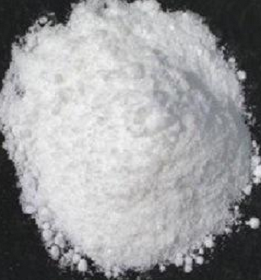Background and overview[1]
3-Aminophenylboronic acid hemisulfate is a boric acid derivative and can be used as a pharmaceutical synthesis intermediate. Boronic acid derivatives are widely used in organic synthesis for the formation of carbon-carbon bonds. In the Suzuki coupling, aryl halides and aryl or vinyl borates or boronic acids are coupled using Pd(PPh3)4. Aryl triflates are also effective coupling partners. Boric acid derivatives have been used in natural product synthesis, materials synthesis, poly(arylene) polymerization, and preparation of oligoaromatic liquid crystals. An important feature of this chemistry is that boric acid is generally a relatively nontoxic and air- and moisture-stable compound. Organoarylboronic acids, heteroarylboronic acids and their derivatives can be obtained through the following different synthetic routes: cross-coupling of bis(pinacolato)diboron (B2pin2) with aryl halides and vinyl halides ( Miyaurap boration reaction) or by conversion of aryllithium or arylmagnesium compounds using trialkyl borate esters followed by acid hydrolysis.

Preparation[1]
1) Preparation of 3-bromo-N-(diphenylmethylene)-aniline (compound 4) by reaction with benzophenone dimethyl ketal
100kg of benzophenone (550 moles) was prepared by using 1.5 molar equivalents of trimethyl orthoformate in a reflux mixture of toluene and methanol (1:3, 5L/kg benzophenone) under an acid catalyst (5 mol% p-toluenesulfonic acid monohydrate) is converted to the corresponding dimethyl ketal. When the reaction was complete, the solvent and excess reagents were removed by distillation and replaced by toluene. To the resulting mixture was added 1 molar equivalent of bromoaniline. The mixture was refluxed and partially concentrated until the end of the switch (12 to 18 hours). The solids formed were removed by filtration and distillation was then continued until the major part of the volatiles had been removed. An equal amount of methanol was added to the resulting concentrated solution/melt and crystallization of the product was initiated by cooling. The resulting suspension was stirred at 10°C for 30 minutes and the solid formed was collected by filtration. The solid was rinsed with methanol (0.5 L/kg benzophenone) and dried under vacuum at 25°C to constant weight. 158 kg of compound 4 were obtained (470 moles; 86% molar yield of benzophenone).
2) Preparation of 3-aminophenylboronic acid hemisulfate (compound 5) from 3-bromo-N-(diphenylmethylene)-aniline (compound 3).
3-Bromo-N-(diphenylmethylene)-aniline (80,0 g; 0.24 mol) was added to the cryogenic reactor together with 1.4 equiv of triisopropyl borate and dissolved in tetrahydrofuran. The resulting solution was cooled to -80°C under an inert atmosphere, 1.35 equivalents of n-butyllithium (as a solution in n-hexane) was added and the internal temperature was maintained. When complete conversion was reached, the reaction mixture was added to a dilute mixture of sulfuric acid (1M) and toluene. The layers were separated to obtain an aqueous solution of 3-aminophenylboronic acid hydrogen sulfate (test yield: 85%) (*point 1). 3-Aminophenylboronic acid (compound 5) can be obtained by precipitation of a 0.5 M aqueous solution at pH 7.2 (pH corrected with 33% NaOH aqueous solution) at a temperature of 0-5°C. After filtration and drying under vacuum at 40° C. for 8 hours, 21.7 g of compound 53-aminophenylboronic acid hemisulfate was obtained (0.16 mol; 66% molar yield).
Main reference materials
[1] CN201480025409.7 Method for preparing aminoarylboronic acid and aminoheteroarylboronic acid and ester

 微信扫一扫打赏
微信扫一扫打赏

